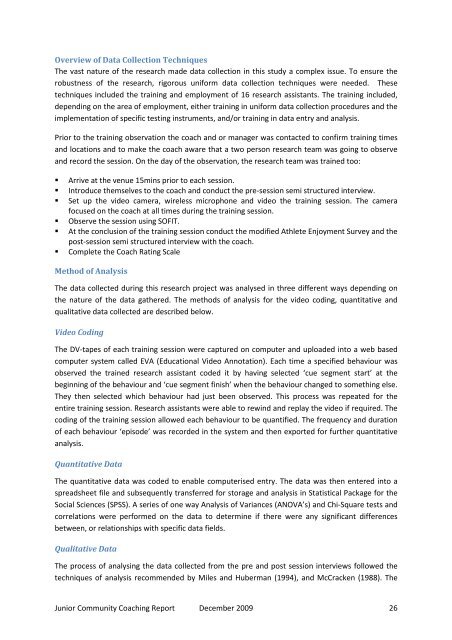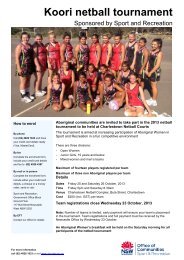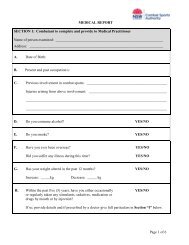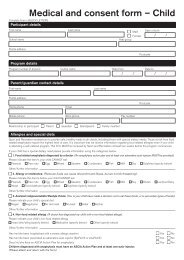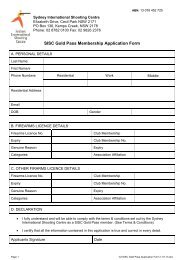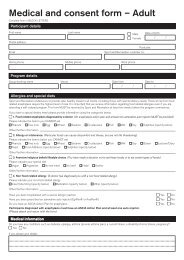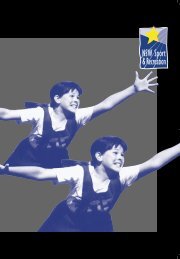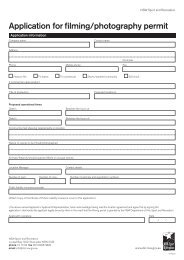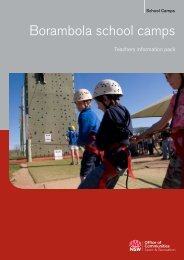Community Junior Sport Coaching final report - 2009
Community Junior Sport Coaching final report - 2009
Community Junior Sport Coaching final report - 2009
You also want an ePaper? Increase the reach of your titles
YUMPU automatically turns print PDFs into web optimized ePapers that Google loves.
Overview of Data Collection Techniques<br />
The vast nature of the research made data collection in this study a complex issue. To ensure the<br />
robustness of the research, rigorous uniform data collection techniques were needed. These<br />
techniques included the training and employment of 16 research assistants. The training included,<br />
depending on the area of employment, either training in uniform data collection procedures and the<br />
implementation of specific testing instruments, and/or training in data entry and analysis.<br />
Prior to the training observation the coach and or manager was contacted to confirm training times<br />
and locations and to make the coach aware that a two person research team was going to observe<br />
and record the session. On the day of the observation, the research team was trained too:<br />
<br />
<br />
<br />
<br />
<br />
<br />
Arrive at the venue 15mins prior to each session.<br />
Introduce themselves to the coach and conduct the pre-session semi structured interview.<br />
Set up the video camera, wireless microphone and video the training session. The camera<br />
focused on the coach at all times during the training session.<br />
Observe the session using SOFIT.<br />
At the conclusion of the training session conduct the modified Athlete Enjoyment Survey and the<br />
post-session semi structured interview with the coach.<br />
Complete the Coach Rating Scale<br />
Method of Analysis<br />
The data collected during this research project was analysed in three different ways depending on<br />
the nature of the data gathered. The methods of analysis for the video coding, quantitative and<br />
qualitative data collected are described below.<br />
Video Coding<br />
The DV-tapes of each training session were captured on computer and uploaded into a web based<br />
computer system called EVA (Educational Video Annotation). Each time a specified behaviour was<br />
observed the trained research assistant coded it by having selected ‘cue segment start’ at the<br />
beginning of the behaviour and ‘cue segment finish’ when the behaviour changed to something else.<br />
They then selected which behaviour had just been observed. This process was repeated for the<br />
entire training session. Research assistants were able to rewind and replay the video if required. The<br />
coding of the training session allowed each behaviour to be quantified. The frequency and duration<br />
of each behaviour ‘episode’ was recorded in the system and then exported for further quantitative<br />
analysis.<br />
Quantitative Data<br />
The quantitative data was coded to enable computerised entry. The data was then entered into a<br />
spreadsheet file and subsequently transferred for storage and analysis in Statistical Package for the<br />
Social Sciences (SPSS). A series of one way Analysis of Variances (ANOVA’s) and Chi-Square tests and<br />
correlations were performed on the data to determine if there were any significant differences<br />
between, or relationships with specific data fields.<br />
Qualitative Data<br />
The process of analysing the data collected from the pre and post session interviews followed the<br />
techniques of analysis recommended by Miles and Huberman (1994), and McCracken (1988). The<br />
<strong>Junior</strong> <strong>Community</strong> <strong>Coaching</strong> Report December <strong>2009</strong> 26


